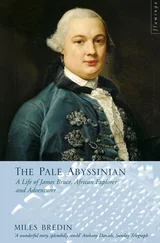C. Brittain - The Wood Nymph, the Cranky Saint
Здесь есть возможность читать онлайн «C. Brittain - The Wood Nymph, the Cranky Saint» весь текст электронной книги совершенно бесплатно (целиком полную версию без сокращений). В некоторых случаях можно слушать аудио, скачать через торрент в формате fb2 и присутствует краткое содержание. Жанр: Фэнтези, на английском языке. Описание произведения, (предисловие) а так же отзывы посетителей доступны на портале библиотеки ЛибКат.
- Название:The Wood Nymph, the Cranky Saint
- Автор:
- Жанр:
- Год:неизвестен
- ISBN:нет данных
- Рейтинг книги:4 / 5. Голосов: 1
-
Избранное:Добавить в избранное
- Отзывы:
-
Ваша оценка:
- 80
- 1
- 2
- 3
- 4
- 5
The Wood Nymph, the Cranky Saint: краткое содержание, описание и аннотация
Предлагаем к чтению аннотацию, описание, краткое содержание или предисловие (зависит от того, что написал сам автор книги «The Wood Nymph, the Cranky Saint»). Если вы не нашли необходимую информацию о книге — напишите в комментариях, мы постараемся отыскать её.
The Wood Nymph, the Cranky Saint — читать онлайн бесплатно полную книгу (весь текст) целиком
Ниже представлен текст книги, разбитый по страницам. Система сохранения места последней прочитанной страницы, позволяет с удобством читать онлайн бесплатно книгу «The Wood Nymph, the Cranky Saint», без необходимости каждый раз заново искать на чём Вы остановились. Поставьте закладку, и сможете в любой момент перейти на страницу, на которой закончили чтение.
Интервал:
Закладка:
The morning sun shone on our heads, and what looked like a hawk soared high above. It was hard to believe in either saints or dragons-or, for that matter, in great horned rabbits-on a lovely June day like this.
“Saint Eusebius himself was living in the grove, then,” Joachim continued. “He lived alone, spending his days in devotion and contemplation. But when a dragon appeared up on the plateau and started eating the people’s flocks, he felt he had to do something.”
“He should have called on a wizard,” I provided. “I know there were wizards, even back then.”
Other than giving me a quick look, he paid no attention to my interruption. “Saint Eusebius took his crucifix and went to face the dragon, to command it in the name of Christ to leave the area.”
“But Joachim, you know that wouldn’t work. It might work with a demon, but dragons aren’t inherently evil, just magic.”
It was harder this time for him to ignore my interruption, but he managed. “Inspired by the devil, the dragon began to eat the holy man. But a desperate group of peasants had banded together, armed with spears and meat hooks. When the dragon tried to swallow the saint, it miraculously began to gag and choke on him. While the dragon was thus occupied, the peasants burst out of hiding and attacked it. One of them got in a lucky stroke with a meat hook and pierced the dragon’s throat at the one spot where it was vulnerable.”
He paused, as though the horror of it were almost too much. “But they were too late to save Saint Eusebius. All that remained of him was his left big toe.”
I felt rather proud that I did not even smile. “And so they preserved the relic at the hermitage where he had lived,” I said, “and subsequent generations of hermits have succeeded Eusebius there ever since. Is that it? But what do you have to investigate now ?”
“Saint Eusebius was always a rather, well, difficult-if holy-man, even while he was alive. Now, fifteen hundred years after his death, some say he’s a difficult saint.”
“What do you mean, difficult?”
“Well,” said Joachim after an almost imperceptible pause, “here’s an example. A lady, a very lovely and vain one, went to his shrine to pray for help in overcoming her faults. The saint began with her vanity, by putting a giant wart on her nose.”
I could see the problem. What was the church supposed to do when the forces of good turned out to be a real pain?
Joachim hurried on without waiting for a response. “His, uh, difficult nature is why the bishop sent me here. Certain priests, in a church two hundred miles from here, have written to the bishop. They say that Eusebius appeared to them in a vision, saying that he was ‘fed up’ with having his relics at this shrine, and that he wanted his toe to be preserved at their church.”
Although a saint who induced giant warts had seemed to have promising possibilities, the situation now sounded like the confusing and dangerous churchly concerns they used to warn us against at the wizards’ school. “If he’s been dead so long, why does it matter where his toe is?” I asked irritably.
Joachim answered with infuriating patience. “The saints are still here with us on earth at the same time as they are in heaven. Even you must know that.”
“But why would priests in a distant city want an old dead saint’s toe anyway?”
Joachim sighed. “This may be hard for you to understand. Their church, the church where Eusebius originally made his profession, has wanted his relics for fifteen hundred years. He was a priest in their city, the son I believe of a provincial administrator under the Empire, before he came to this valley to become a hermit.”
A city boy like me, I thought, or least like I used to be.
“After the saint was martyred,” Joachim continued, “the priests there even rededicated their church in his name.”
“But that was all so long ago!”
Joachim shook his head, with the air of someone who had known all along that I wouldn’t understand. “Individuals forget, and individuals die. But churches are undying institutions, and they never forget.” He took a deep breath. “But you don’t need to worry about either the saint or the hermit who lives there now. That’s my responsibility. I want you to worry about the wood nymph.”
He stood up and took the offending bridle with bells off his horse. In a few moments, with our harnesses where they should be and the stirrups readjusted, we continued on across the plateau.
In another mile, the road turned abruptly to the left. Ahead of us was a low stone wall. Rather than turning, Joachim rode his bay up to the wall. “Look at this.”
Although one could not see it until almost on top of it, before us was a narrow and very deep valley. I pulled my mare’s head up more sharply than necessary when I realized we were standing at the very edge of a cliff, with only the low wall between us and an abrupt drop. The morning mists still lingered below in the shadow of the valley walls. Beneath the vertical white cliffs, an intensely green valley curved away, a narrow river rushing down its center.
“Directly below us,” said Joachim, pointing downward, “hidden by those trees, is the hermitage, built at the source of the river. There is a direct path down-or I should rather say steps cut into the cliff-just a little farther along, but the road itself takes two more miles to get down to the valley floor.” Off to our left, at a spot where the cliffs were not quite so steep, I could see the white line of the road winding its way sharply down into the valley, appearing and disappearing among the beeches.
Joachim shook his horse’s reins and started along the road. I followed after one more look down. I could have flown down myself easily enough, but I would not want to try it carrying the mare.
We had gone less than a hundred yards when Joachim stopped again, pulling up the reins so hard that his normally gentle bay half reared and gave a protesting whinny. Wondering if it might be the mysterious horned rabbit, I hurried my horse to join him, then stared with equal surprise.
Before us was a little wooden booth. No one was inside, but a large brightly-colored sign proclaimed, “See the Holy Toe! Five pennies on foot, fifteen pennies in the basket.”
I was trying to work out what this could mean, if perhaps whoever had painted the sign was offering us a chance to see the holy toe on someone else’s foot, and why a toe in a basket should be more valuable, when there was movement under a nearby tree. A young man in a feathered cap stood up and came out from the shadows.
“Greetings, my fine gentlemen!” he said in the hearty tones of someone manning a booth at a fair. “Are you here to see the Holy Toe of Saint Eusebius the Cranky? I’m afraid we don’t have the basket ready quite yet, but if you want to go down on foot it’s not a bad climb-and cheaper, too!”
Joachim dismounted and looked sternly at him. “So you’re charging people just for the privilege of climbing down the cliff to the Holy Grove?”
The man gave a start, as though feeling the impact of the chaplain’s eyes, but he recovered almost immediately. “Excuse me, Father, I didn’t notice your vestments at first. If you’re worried that we’re restricting access to the relics, you needn’t be; people can still go around by the road for free. We’re just providing an extra service.”
“Charging them to climb down the steps is an extra service?”
“Ah, but we’ve improved the path!” said the man proudly. “And our real service is going to be the basket. As I said, we don’t have it ready quite yet, but we should in a few weeks.”
“What is this basket?” I asked.
Читать дальшеИнтервал:
Закладка:
Похожие книги на «The Wood Nymph, the Cranky Saint»
Представляем Вашему вниманию похожие книги на «The Wood Nymph, the Cranky Saint» списком для выбора. Мы отобрали схожую по названию и смыслу литературу в надежде предоставить читателям больше вариантов отыскать новые, интересные, ещё непрочитанные произведения.
Обсуждение, отзывы о книге «The Wood Nymph, the Cranky Saint» и просто собственные мнения читателей. Оставьте ваши комментарии, напишите, что Вы думаете о произведении, его смысле или главных героях. Укажите что конкретно понравилось, а что нет, и почему Вы так считаете.












